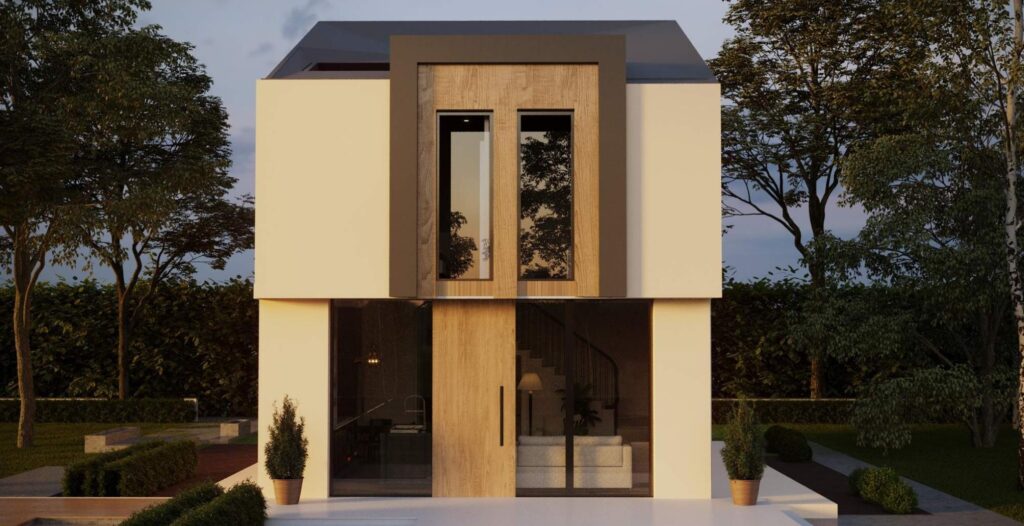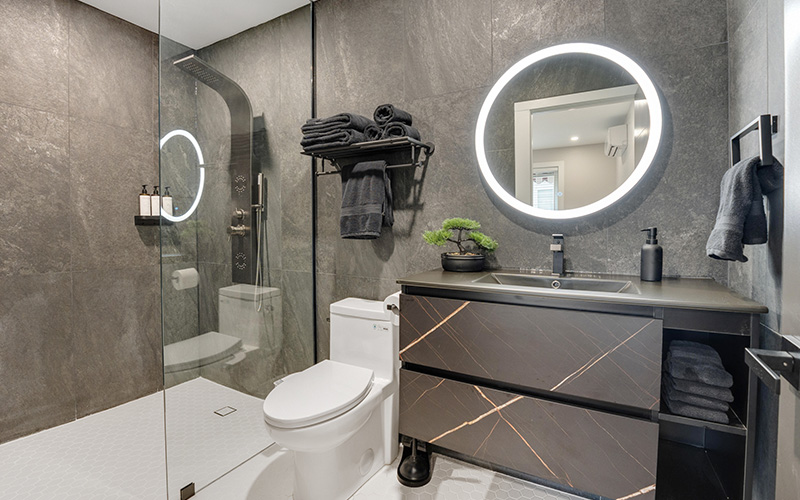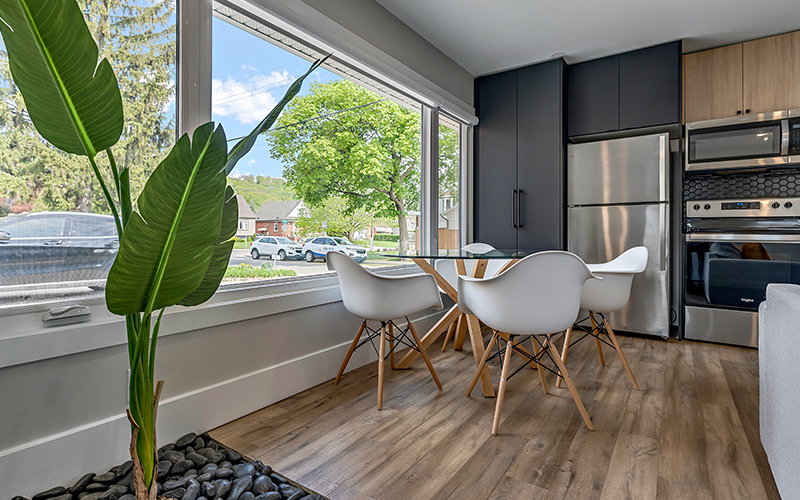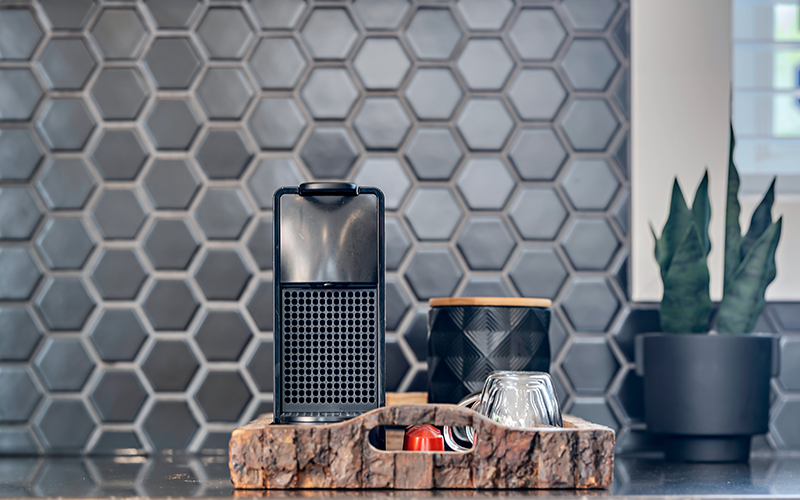Garden Suites
In an ever-evolving world of housing solutions, garden suites, laneway homes, Accessory Dwelling Unit (ADUs) and tiny homes have risen to the forefront as innovative alternatives that offer so many advantages for homeowners and property investors. These compact and stylish living spaces provide a fresh perspective on efficient and sustainable living, and they’re gaining popularity across various communities.



Creating flexible spaces for living
The common thread that binds these alternative living solutions is the potential to unlock unused spaces and revitalize underutilized property areas. At Newfore, we’re experts in the design and construction of garden suites, laneway homes, and tiny homes. Our team of experts can help you realize your vision, produce your design, maximize your property’s value, and embrace a sustainable, space-efficient lifestyle. Explore the possibilities these innovative housing options offer, and let us be your partner in transforming your property into a more functional and valuable space.
Design and Permits
First step of a garden suite conversion project is to get a building permit. You’ll need a water service upgrade permit as well as a building permit for the renovation including Architectural and Mechanical drawings. If you’re building a new garden suite, you’ll also need Structural drawings.
Servicing and Utilities
To run utilities to a garden suite, the Contractor has to excavate a service trench to the primary home. Next they will tie water and power to the existing services of the home. If the garden suite mechanical drawings show a furnace, then a gas line will have to be included in the service trench.
Renovations
The renovation of an existing garage will start with framing to establish the layout of the garden suite. After the garden suite is framed, plumbing, electrical and mechanical will be run and the garden suite can be insulated, drywalled and finishes installed next.
Garden Suite in Hamilton, ON
We take you through a step-by-step guide including costs to retrofit an existing garage into a garden suite.
AREA – 510sqft
TOTAL COST – $125,160
TOTAL RENT – $2,100+hydro
TOTAL COST – $125,160
TOTAL RENT – $2,100+hydro
First step of a garden suite conversion project is to get a building permit. You’ll need a water service upgrade permit as well as a building permit for the renovation including Architectural and Mechanical drawings (in some cases you might need structural). The cost for these drawings are $5,000-$8,000. You can choose to do this yourself or you can start discussing this with a Hamilton Contractor.
At this stage, hiring a Contractor to work on this for you ensures your drawings go through a constructability review while the drawings are being produced. This is a major advantage as you can avoid costly construction by having a Hamilton Contractor already engaged. Drawings will take 3-4 weeks to be produced and once they’re produced, they’re ready to submit to the City of Hamilton. The City of Hamilton review time ranges from 1-3 months. There are cases where review takes longer than 3 months but those are specific cases and less common.


After a building permit is issued, your licensed Hamilton Contractor can start construction. The first step is getting utilities to the garage which is done between April and October when the ground isn’t frozen. The Hamilton Contractor starts with digging a utility trench and running electrical, water lines and drains into the home and tying into the home’s utilities. You want to avoid tying directly to the city lines as costs to do this drastically increase.
Once utilities are run to the garden suite, you can start framing, plumbing, electrical and mechanical. At this stage your Hamilton Contractor has to call the city to inspect the utilities. The building inspector needs to approve this before moving to the next stage. Once passed, your Hamilton Contractor will begin insulating. If your permit calls for Batt insulation, the Hamilton Contractor installs poly as well then calls the city inspector back to review. Once approved, drywalling begins.
Now, bathrooms, painting, flooring, trim, doors and cabinets can begin. This is where the garden suite finally starts to come together. We always recommend starting with the bathroom and covering floor tiles with protective paper so there isn’t unnecessary cleaning when the rest of the finishes progress.
When renovating, avoid finishes that are too common. You don’t want to hop on trends that are widely used. Give your renovation a unique touch so your listing can be remembered. Your garden suite should trigger feelings of warmth and comfort. This will attract quality long term tenants and creates demand for your unit. Even small features like this recessed black polished stone area will give the garden suite a unique touch.

Garden Suites
Garden suites, often referred to as ADUs, offer a flexible living arrangement by utilizing the space in your garden or backyard. They are a fantastic way to maximize the use of your property, providing extra living space for family members, guests, or even as a rental unit. Garden suites are known for their adaptability, environmentally friendly design, and energy efficiency.
Laneway Homes
Laneway homes, as the name suggests, are typically constructed along the rear of a property in the existing laneway. These charming and compact residences have gained popularity in urban areas, offering a sustainable solution to housing shortages. Laneway homes are a creative way to transform underutilized spaces into functional and stylish living quarters. They’re perfect for homeowners who want to maintain their primary residence while generating rental income or accommodating extended family members.
Tiny Homes
Tiny homes have captured the hearts of many homeowners seeking a simplified and minimalist lifestyle. These pint-sized residences are often built with a strong focus on energy efficiency and sustainable living. Tiny homes are versatile and can be tailored to meet your unique needs, whether it’s for downsizing, travel, or creating a guest house.
Tiny Homes – Garage Edition
In this episode we go through a garden suite renovation. Check out some of the team’s challenges, how much income we managed to generate for the homeowner and the final product!
CHCH Morning Live – Converting Garages to Living Space
Creating flexible spaces for living
Lorem ipsum dolor sit amet, consectetur adipiscing elit. Lorem ipsum dolor sit amet
Lorem ipsum dolor sit amet, consectetur adipiscing elit. Lorem ipsum dolor sit amet
Lorem ipsum dolor sit amet, consectetur adipiscing elit. Lorem ipsum dolor sit amet
FAQ
The cost of a garden suite can be broken down into three categories. Firstly the pre-construction costs of architectural design and engineering. Secondly the permitting costs that are paid directly to the city. Lastly the actual cost of construction. The pre-construction costs can range from $6,000 – $20,000 depending on the complexity and size of the project. Permitting fees vary per city but range from $1,000 – $5,000. Construction costs will largely depend on the level of finishes and the size of the project. In general the cost to construct a garden suite can range from $350 – $450 per square foot. In general the larger structure you build, the more cost efficient the building process becomes from a per square foot basis.
Yes! New legislature in Ontario from 2019 is causing many municipalities to expedite the approval of Garden Suites and Accessory Dwelling Units within their city limits. Book a free consultation today to determine whether your city /town permits the construction of accessory dwelling units.
Accessory Dwelling Units or Garden Suites can come in many shapes and sizes, from an attached garage conversion or an in-law suite to a backyard guest house or a basement studio apartment. The best ADU design is one that matches the use cases, budget, and needs of both you and your property. Our architectural design team can help bring the best ADU for you to life.
Every municipality has different by laws and zoning regulations that determine how big of a garden suite you can build. The main items to consider are setbacks from your property lines (distance), separation from the existing structure, and lot coverage ratios that dictate what percent of your lot can be covered by accessory structures. You can get in touch with us for a free consultation and we can let you know whether your lot can support a garden suite.
The first step in the Garden Suite journey is determining site eligibility and zoning requirements. You can book a free consultation with us where we’ll do a preliminary study to determine whether your property qualifies at no cost to you. From there, depending on the municipality you are typically required to produce architectural drawings, engineering drawings, and a site plan for permit package submission. Some municipalities will also require a survey / grading plan, and potentially require an arborist to get involved with the project. We can help you navigate this process.
Typically, the process to architect, get permits and build takes anywhere from 5-8 months.
Architectural: 4-6 weeks
Permit: 4-12 weeks (city dependent)
Build: 4 months
Breaking ground will not happen in the winter so it’s best to plan for design and permit in the colder months.
